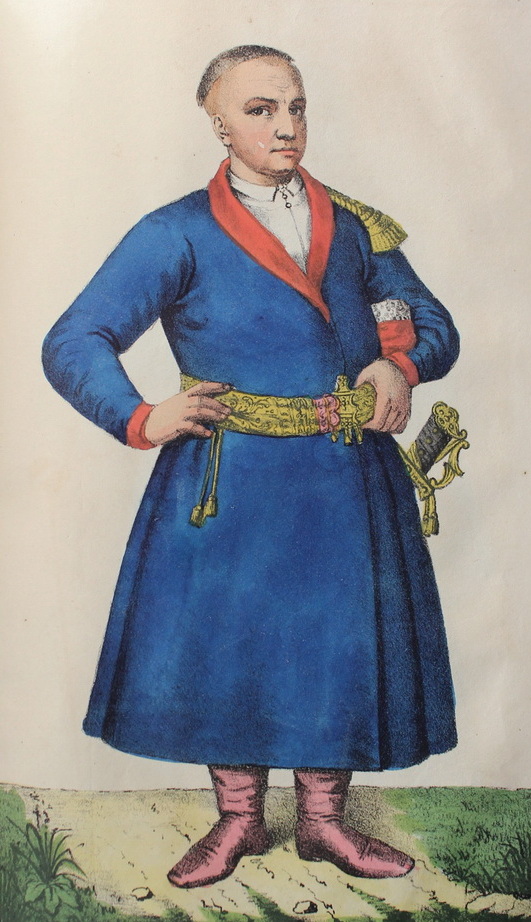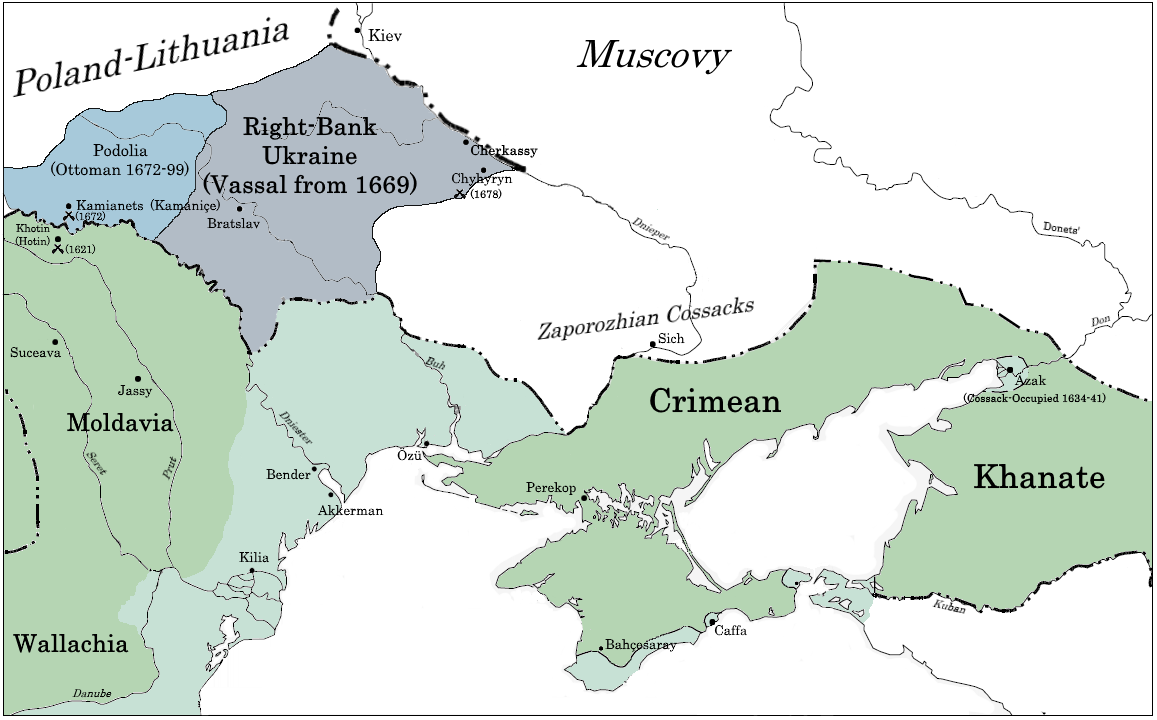|
Akhtyrka
Okhtyrka ( uk, Охти́рка, ) is a city located in the Sumy Oblast (province) of Ukraine. It is administratively incorporated as a city of oblast significance. The city has also served as the administrative center of the smaller Okhtyrka Raion since 1975, although it does not belong to the raion itself. Okhtyrka was once home to Hussars and Cossacks. It was also once a regional seat of the Sloboda Ukraine imperial region and of the Ukrainian SSR. Since the discovery of oil and gas in 1961, Okhtyrka has become the "oil capital of Ukraine." It is home to Okhtyrka air base and historical and religious places of interest. The villages of Velyke Ozero (274 inhabitants), Zaluzhany (28 inhabitants), Prystan (7 inhabitants), and Koziatyn (6 inhabitants) belong to the Okhtyrka city administration which is designated into a separate subdivision of the Sumy Oblast. Population * 1867: 17,411 * 1900: 25,965 * 2001: 50,400 * 2021: 47,216 Name According to the most probable etymo ... [...More Info...] [...Related Items...] OR: [Wikipedia] [Google] [Baidu] |
Akhtyrka Uyezd
Akhtyrsky Uyezd (russian: Ахтырский уезд) was an uyezd (district) in the Kharkov Governorate of the Russian Empire. History This uyezd was created on April 25, 1780 by order of the Empress Catherine the Great. Since September 1781, Akhtyrka got its own coat of arms. The uyezd had one town ( Akhtyrka) and consisted of 13 volosts. In the early 1890s, construction of a chaussee began through the uyezd. In 1895, Akhtyrka railway station was built. By the Soviet administrative reform of 1923, the uyezd was merged with Bogodukhov uyezd into ''Bogodukhov okrug''. Demographics At the time of the Russian Empire Census of 1897, Akhtyrsky Uyezd had a population of 161,243. Of these, 87.6% spoke Ukrainian, 11.3% Russian, 0.5% Belarusian, 0.2% Yiddish, 0.1% Polish and 0.1% German German(s) may refer to: * Germany (of or related to) ** Germania (historical use) * Germans, citizens of Germany, people of German ancestry, or native speakers of the German language ** For c ... [...More Info...] [...Related Items...] OR: [Wikipedia] [Google] [Baidu] |
Okhtyrka (air Base)
Okhtyrka was a military aviation training air base in Ukraine located 8 km east of Okhtyrka city in Sumy Oblast. Operated by the Soviet Air Forces and then the Ukrainian Air Force The Ukrainian Air Force ( uk, Пові́тряні си́ли Збро́йних сил Украї́ни) is the air force of Ukraine and one of the five branches of the Armed Forces of Ukraine. Its headquarters are in the city of Vinnytsia. W ..., it was home to the 809th Aviation Training Regiment, flying 102 L-39C aircraft. The base ceased operations in 2004. References *http://www.weathergraphics.com/tim/russia/Akhtyrka.htm Tim Vasquez, Russian Airfields Soviet Air Force bases Ukrainian airbases {{Sumy-geo-stub ... [...More Info...] [...Related Items...] OR: [Wikipedia] [Google] [Baidu] |
Vorskla River
The Vorskla (; ) is a river that runs from Belgorod Oblast in Russia southwards into northeastern Ukraine, where it joins the Dnieper. It has a length of , and a basin area of . Right tributaries of the river include the and Boromlia, and left tributaries Merla, |
Kharkiv
Kharkiv ( uk, wikt:Харків, Ха́рків, ), also known as Kharkov (russian: Харькoв, ), is the second-largest List of cities in Ukraine, city and List of hromadas of Ukraine, municipality in Ukraine.Kharkiv "never had eastern-western conflicts" ''Euronews'' (23 October 2014) Located in the northeast of the country, it is the largest city of the historic Sloboda Ukraine, Slobozhanshchyna region. Kharkiv is the administrative centre of Kharkiv Oblast and of the surrounding Kharkiv Raion. The latest population is Kharkiv was founded in 1654 as Kharkiv fortress, and after these humble beginnings, it grew to be a major centre of industry, trade and Ukrainian culture in the Russian Empire. At the beginning of the 20th century, ... [...More Info...] [...Related Items...] OR: [Wikipedia] [Google] [Baidu] |
Kiev Voivodeship
The Kiev Voivodeship ( pl, województwo kijowskie, la, Palatinatus Kioviensis, uk, Київське воєводство, ''Kyjivśke vojevodstvo'') was a unit of administrative division and local government in the Grand Duchy of Lithuania from 1471 until 1569 and of the Crown of the Kingdom of Poland from 1569 until 1793, as part of Lesser Poland Province of the Polish Crown. The voivodeship was established in 1471 upon the death of the last prince of Kiev Simeon Olelkovich and transformation of the Duchy of Kiev (appanage duchy of the Grand Duchy of Lithuania) into the Voivodeship of Kiev. Description The voivodeship was established in 1471 under the order of King Casimir IV Jagiellon soon after the death of Semen Olelkovich. It had replaced the former Principality of Kiev, ruled by Lithuanian-Ruthenian Olelkovich princes (related to House of Algirdas and Olshansky family). Its first administrative center was Kiev, but when the city was given to Imperial Russia in 1667 ... [...More Info...] [...Related Items...] OR: [Wikipedia] [Google] [Baidu] |
Protopope
A protopope, or protopresbyter, is a priest of higher rank in the Eastern Orthodox and the Byzantine Catholic Churches, generally corresponding to Western Christianity's archpriest or the Latin Church's dean. History The rights and duties of these dignitaries have varied to some extent at different times and in different local churches. Roughly, the titles archpriest (in Greek ''archipresbyteros''), protoiereus ( ''protoiereus'', ''protopresbyteros''), protopope may be taken as meaning the same thing, though they have occasionally been distinguished. The general idea is that the archpriest has the highest rank in his order; he comes immediately after the bishop. In the fifth century he appears as head of the college of priests, as the bishop's delegate for certain duties of visitation and canonical judgment, as his representative in case of absence or death (''sede vacante''). He therefore combined the offices of the Roman Catholic dean of the chapter, vicar-general and vicar c ... [...More Info...] [...Related Items...] OR: [Wikipedia] [Google] [Baidu] |
Sotnik
Sotnik or sotnyk (, uk, сотник, bg, стотник) was a military rank among the Cossack ''starshyna'' (military officers), Strelets Troops (17th century) in Muscovy and Imperial Cossack cavalry (since 1826), the Ukrainian Insurgent Army, the Ukrainian Galician Army, and the Ukrainian People's Army. Administrative rank Holders of the rank also served as leaders of territorial units. In the Cossacks' paramilitary society of the Zaporozhian Host, Cossack Hetmanate, and Sloboda Ukraine, territories were organized along the lines of military organization and commanded by officers. During the Khmelnytsky Uprising and in the Cossack Hetmanate (17th-18th centuries), ''sotnyks'' were leaders of territorial administrative subdivisions called ''sotnyas''. Such sotnyks were subordinated to ''polkovnyks'' (colonel) who were in control of a polk (primary administrative division) and a regiment (military unit). Military ranks The word ''sotnik'' literally means ''commander of a hun ... [...More Info...] [...Related Items...] OR: [Wikipedia] [Google] [Baidu] |
Voivode
Voivode (, also spelled ''voievod'', ''voevod'', ''voivoda'', ''vojvoda'' or ''wojewoda'') is a title denoting a military leader or warlord in Central, Southeastern and Eastern Europe since the Early Middle Ages. It primarily referred to the medieval rulers of the Romanian-inhabited states and of governors and military commanders of Hungarian, Balkan or some Slavic-speaking populations. In the Polish-Lithuanian Commonwealth, ''voivode'' was interchangeably used with ''palatine''. In the Tsardom of Russia, a voivode was a military governor. Among the Danube principalities, ''voivode'' was considered a princely title. Etymology The term ''voivode'' comes from two roots. is related to warring, while means 'leading' in Old Slavic, together meaning 'war leader' or 'warlord'. The Latin translation is for the principal commander of a military force, serving as a deputy for the monarch. In early Slavic, ''vojevoda'' meant the , the military leader in battle. The term has als ... [...More Info...] [...Related Items...] OR: [Wikipedia] [Google] [Baidu] |
Right-bank Ukraine
Right-bank Ukraine ( uk , Правобережна Україна, ''Pravoberezhna Ukrayina''; russian: Правобережная Украина, ''Pravoberezhnaya Ukraina''; pl, Prawobrzeżna Ukraina, sk, Pravobrežná Ukrajina, hu, Jobb parti Ukrajna) is a historical and territorial name for a part of modern Ukraine on the right (west) bank of the Dnieper River, corresponding to the modern-day oblasts of Vinnytsia, Zhytomyr, Kirovohrad, as well as the western parts of Kyiv and Cherkasy. It was separated from the left bank during the Ruin. Right-bank Ukraine is bordered by the historical regions of Volhynia and Podolia to the west, Moldavia to the southwest, Yedisan and Zaporizhzhia to the south, left-bank Ukraine to the east, and Polesia to the north. Main cities of the region include Cherkasy, Kropyvnytskyi, Bila Tserkva, Zhytomyr and Oleksandriia. History The history of right- and left-bank Ukraine is closely associated with the Khmelnytsky Uprising of 1648–57. The ... [...More Info...] [...Related Items...] OR: [Wikipedia] [Google] [Baidu] |
Crown Of Poland
The Crown of the Kingdom of Poland ( pl, Korona Królestwa Polskiego; Latin: ''Corona Regni Poloniae''), known also as the Polish Crown, is the common name for the historic Late Middle Ages territorial possessions of the King of Poland, including the Kingdom of Poland proper. The Polish Crown was at the helm of the Polish–Lithuanian Commonwealth from 1569 to 1795. Major political events The Kingdom of Poland has been traditionally dated back to c. 966, when Mieszko I and his pagan Slavic realm joined Christian Europe (Baptism of Poland), establishing the state of Poland, a process started by his Polan Piast dynasty ancestors. His oldest son and successor, Prince Bolesław I Chrobry, Duke of Poland, became the first crowned King of Poland in 1025. Union of Krewo The Union of Krewo was a set of prenuptial agreements made in the Kreva Castle on August 13, 1385. Once Jogaila confirmed the prenuptial agreements on August 14, 1385, Poland and Lithuania formed a personal uni ... [...More Info...] [...Related Items...] OR: [Wikipedia] [Google] [Baidu] |
Treaty Of Polyanovka
The Treaty of Polyanovka ( pl, Polanów, also known as the ''Peace of Polyanovka / Polanów'') was a peace treaty signed on 14 June 1634 between the Polish–Lithuanian Commonwealth and the Tsardom of Russia in the village of Semlevo located near the Polyanovka river between Vyazma and Dorogobuzh. The accord was signed in the aftermath of the Smolensk War. The negotiations began on 30 April after the failure of the Polish-Lithuanian siege of Belaya. Overall, the agreement confirmed the pre-war status quo, with Russia paying a large war indemnity (20,000 rubles in gold) for Władysław IV agreeing to surrender his claim to the Russian throne and return the royal insignia to Russia. Władysław, despite holding an upper hand, was trying to bring Russia into an anti-Sweden alliance; hence in a gesture of goodwill he agreed to give the Russians the border town of Serpeysk and nearby territories. However, the alliance never came through, as the Polish-Lithuanian Sejm, unwilling to ... [...More Info...] [...Related Items...] OR: [Wikipedia] [Google] [Baidu] |



.png)
